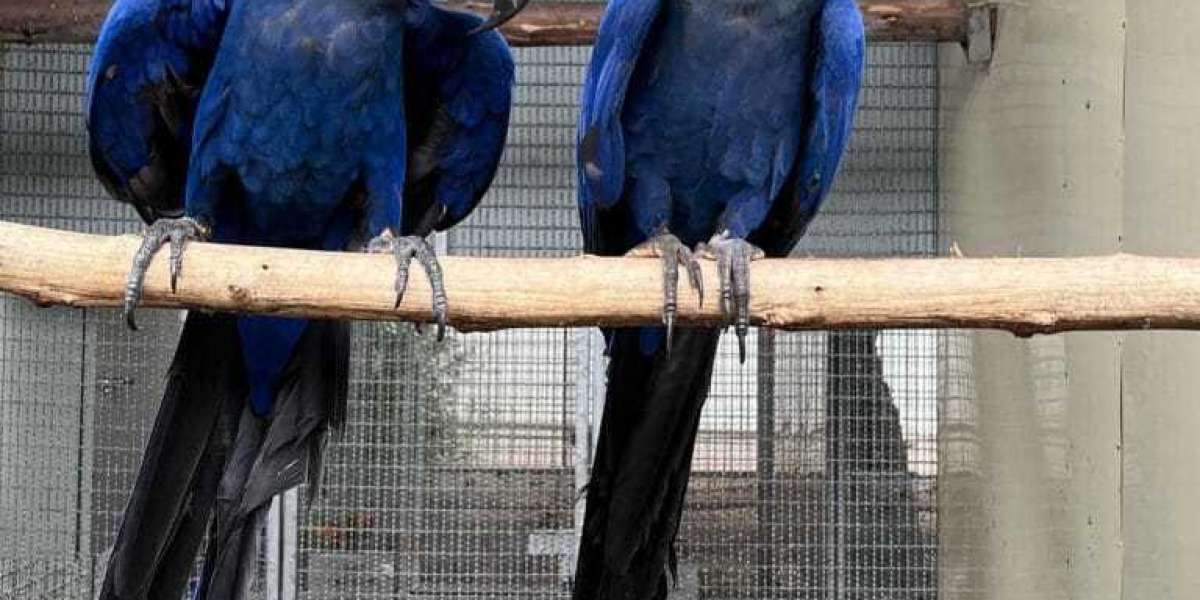 The Chestnut Fronted Macaw, also known as Ara severa, is a frequent sight at Rainforest Expeditions. These intelligent parrots require plenty of attention.
The Chestnut Fronted Macaw, also known as Ara severa, is a frequent sight at Rainforest Expeditions. These intelligent parrots require plenty of attention.They are diurnal and spend their time exploring and interacting. These vibrant parrots are characterized by the chestnut-colored patch on their forehead and lores, as well as white facial skin with lines of fine black feathers.
Size
The chestnut-fronted macaw or Ara severus, is a colorful and vibrant bird that can last up to 40 years when properly taken care of. This medium-sized parrot is native to South America, primarily Brazil and Bolivia in which it resides in forests and agricultural areas. It is not a species that migrates and typically travels in pairs or small flocks. It is an extremely intelligent bird that requires a lot of interaction.
The feathers that are green on this bird are stunning. It also has a chestnut patch at the front and white patches around its eyes. The tail is long, tapered, and the wings are a vibrant blue color. The bird also has a huge beak that can crack open seeds and nuts. Males and females are alike in appearance, however it is difficult to determine the sex of a macaw through visual observation alone.
They are omnivorous and their diet of choice is fruits seeds, green leaves, and flowers. They are also known to frequent licks of clay, where they consume mineral-rich soil which aids in digesting their food and neutralize the toxins.
Pet owners can feed their severe macaws a variety of food, including frozen, cooked and fresh food. They should also provide their pets with plenty of toys to aid in exercising their wings and beaks. It is essential to give your pet two to four hours of playtime out of the cage every day to keep them engaged and healthy.
While severe macaws are intelligent and enjoyable to interact with, they can be challenging to control because they tend to bite if scared or threatened. Spending time with macaws can help you to control and love them. This will help them trust you and to feel safe around you.
Macaws that are pet friendly should have access to a large outside area where they can fly. They can be taught to fly using harnesses that are attached to their cages and they will enjoy playing in the outdoor garden or even the back yard. The outdoors can allow them to expand their wings and work their beaks. They can become irritated if they are not properly utilized. Outdoor time can aid in relaxing and calm, reducing their tendency to bite.
Habitat
Chestnut fronted macaws is the most common macaw species that can be found in the rainforest near Tambopata. They are one of the most frequent sightings our Rainforest Expedition guests make while on their Amazon adventure! In areas of second-growth forests and riverine habitats they are plentiful. This is likely because they are attracted to these types of habitat. Whatever the reason their presence, their presence in these forests is an indication that the ecosystem is healthy and balanced. They also serve as seed dispersers, promoting the health and renewal of these tropical forests.
Chestnut-fronted Macaws are a colorful bird with a glistening, green body and distinctive chestnut patches on the forehead, as well as lores. Their tails and wings are a stunning shade of blue, while the area around their eye is unadorned, highlighting their expressive eyes.
The screeches and squawks they produce are just some of their vocalizations. These calls are used to communicate with the flock as well as to defend territory and create bonds between mates. They also visit clay licks in order to get mineral nutrients from the soil.
Macaws spend the majority of their time foraging and socializing, as well as engaging in playful behaviors. They are adept at flying and can travel for long distances in search of food or new habitats.
If you are looking for a pet macaw with chestnut fronts, the chestnut fronted macaw is an excellent choice. Its intelligence and ability to master commands and tricks in human language makes it a great companion bird. To avoid problems with behavior, it is important to provide this bird with the attention and care it deserves.
As with all birds the chestnut-fronted macaw needs to have a varied diet comprised of premium seeds and pellets, as well as daily offerings of fresh fruits and vegetables. This will ensure that they are receiving the proper nutrition they need to flourish.
The International Union for Conservation of Nature (IUCN) lists this bird as being of Least Concern, which means that its population is stable and it has few threats in the wild. Despite this, its habitat is in danger due to destruction of forests and illegal capture for the pet trade. In order to protect these magnificent creatures, we must continue conservation efforts, including the preservation of habitat and regulating the trade of wild animals.
Feeding
Chestnut fronted macaws are gregarious birds that enjoy interacting with humans. In the wild they form strong bonds and gather with their family members. They can also imitate human speech in a certain manner. You might hear them yelling but they are using their voices to communicate within their group or defend their territory.
The chestnut-fronted macaw is medium-sized parrot with an extended tapered tail. The chestnut patch on the forehead and crown highlights its bright green feathers. This distinctive hue makes it stand out from other macaws. In the wild, they are non-migratory and inhabit diverse tropical forests and woodlands.
Their huge beaks were created to break nuts and seeds which comprise a large portion of their diet. These macaws are known to visit clay licks to absorb minerals from the earth.
 They are also known for their prankster inclinations, as they will turn almost anything into a play toy. They are very playful birds and require a lot of attention and care since they can cause damage when they are not given sufficient stimulation. Look into local animal shelters and adoption centers for information on a severe macaw. These gorgeous birds are often available to be adopted. You can save a child's life by adopting a rescue pet.
They are also known for their prankster inclinations, as they will turn almost anything into a play toy. They are very playful birds and require a lot of attention and care since they can cause damage when they are not given sufficient stimulation. Look into local animal shelters and adoption centers for information on a severe macaw. These gorgeous birds are often available to be adopted. You can save a child's life by adopting a rescue pet.The severe macaw, as with other macaws, is a vocal and expressive bird. It is a fantastic option for families because it can be taught to speak and even repeat back words to you. It is crucial to feed the birds a balanced diet, including high-quality pellets and fresh fruits and vegetables. It is a great idea to add more protein to the diet of your macaws that are severely ill, as this will help it grow strong and healthy.
Severe macaws are also prone to roosting in trees, so it is important to keep them safe when they are sleeping. They sleep lightly and are prone to waking up if they hear something unusual. In addition, they will not sleep on their perch if they feel the vibrations of a bird that is breathing close by.
Breeding
This colorful parrot is commonly found in Brazil however it has a wide range that extends to southern Central America and northern South America. Chestnut-fronted macaws, or Ara severus which is what they're often referred to as and exhibit fascinating breeding behaviours in the wild.
These beautiful birds are famous for their colorful plumage. They are renowned for their stunning display of their tail and wing with vibrant green feathers. This creates a stunning silhouette while flying. The chestnut-colored foreheads adds more class. In the wild, these birds develop lifetime monogamous relationships with their mates. Their affectionate behaviors often include preening each other, nibbling on feathers on each other's faces, and grabbing their partner's beaks. They also show various courtship displays, which are accompanied by loud vocalizations.
When a pair of exotic birds, a male and a female, bond and begin to construct a nest. These macaws are cavity nesters, and they typically build their nests in tree hollows or woodpecker holes that have been abandoned. Females are the most important part of the building of nests. She uses her beak to dig up the inside of the hole to create a safe environment for her young. After the nest is built and erected, both members of the pair help to fill it with soft material and twigs for the chicks.
After hatching, the chicks remain with their parents for a few months until they are fully grown. During this time, chicks will be taught about the important aspects of their habitat from their parents, like food, water, and shelter. In the wild they are found in tropical and subtropical forest, but also inhabit grasslands, savannahs and Savannahs.
The chestnut-fronted macaw makes an excellent pet bird, however, it requires a lot of care and attention. Do your research before deciding to adopt or buy one of these exotic pets. You should ensure that the animal is a good fit for your lifestyle and is from an accredited breeder or adoption agency. These beautiful birds also require regular exercise and proper nutrition to thrive.








